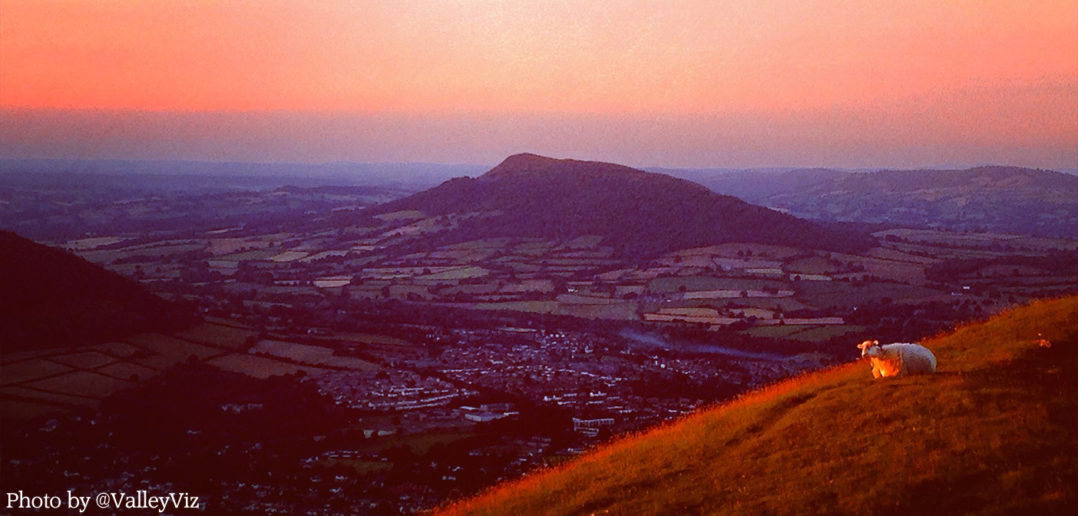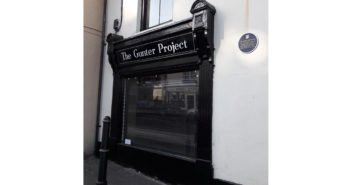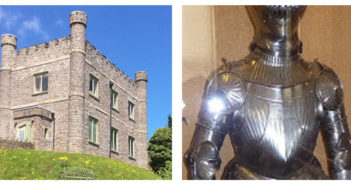There are some characters from the past whose personalities seem to connect with our minds and interests as if they were alive today. For me, one such is Archdeacon William Coxe, (1748-1828), clergyman, historian and traveller who voyaged widely and wrote about it in exhaustive – some might say exhausting – detail. In the summer of 1798 he toured Monmouthshire with Sir Richard Hoare and recorded his visit in A Historical Tour of Monmouthshire published in 1801. Here he describes his visit to Abergavenny where he met everybody, talked incessantly, produced letters of introduction in order to stay with people and all but fainted on top of the Skirrid.
He was born in London, educated at Eton and Cambridge and accompanied various noblemen and gentlemen on their travels in Europe producing over 12 volumes of writings in all, one of which was a “prodigious and detailed” account of the Alps. Although he became Archdeacon of Wiltshire, his clerical duties must have been light enough to allow him time for his other interests, which he pursued in leisurely fashion, seeming to chat at inordinate length to his hosts, exchanging information and – we hope – listening to each other intently.
He wrote about St Mary’s church and its effigies including minor facts such as the tithes of his castle paid by William de Braose in the reign of King John: ”bread, wine, beer, cyder, all manner of flesh, fish, salt, honey, wax, tallow” on condition that the abbot and convent of St. Vincent’s in Mans, to which the Abergavenny priory was a cell, should daily pray for the soul of King Henry 1 and for himself and wife Maud. He claimed that the female effigy holding a chain was attached to her pet squirrel as she died trying to catch it and falling from a wall probably in the castle.
He decided to climb the Sugar Loaf and Skyrrid [sic] in one day and managed the first by light carriage which took him nearly to the summit. Belonging to an era in which people loved to stimulate their own sensibilities and give themselves palpitations, he dwelt on and rhapsodised about the view from the top with the Little Skyrrid “appearing like a gentle eminence feathered with wood”, his thoughts assuming a character of “sublimity” and his soul imbibing “a portion of their unalterable purity.”
When he came to climb the Skirrid he rapidly discovered that his horse would not make it and that his guide did not know the way. Undeterred, he proceeded on foot in intense heat and was in such a hurry to reach the summit that, when he arrived there, the sight overcame him. He felt a mixed sensation of “animation and lassitude, horror and delight” as strong as any he had experienced in the Alps and threw himself to the ground. Nevertheless he was not there to enjoy himself and took out his pencil to make a few notes. Later he returned more cautiously, found St. Michael’s Mount and gazed at the spires of Hereford Cathedral, Grosmont Castle, White Castle, the Severn and the Vale of Usk. All these thorough accounts are fleshed out even further by quotations from Shakespeare, Latin inscriptions and extracts from the even wordier poet Sotheby.
Travel writers sometimes assume a persona similar to that of Mark Twain in Innocents Abroad so as to seem to be at a loss and the victim of unforeseen events: Bill Bryson is a modern variant and the pose gives rise to comedy. Not so our serious Archdeacon: any humour is not of his creating but ours when we visualise him prone and panting yet scribbling his notes for posterity. Yet he was knowledgeable and scholarly, interested in everything and everybody with admirable fortitude and stamina. He is one of my favourite characters and I own a facsimile of this work with its illustrations and the original text. If you are intrigued by him you could probably obtain a copy from the library to see if you like it enough to buy.




